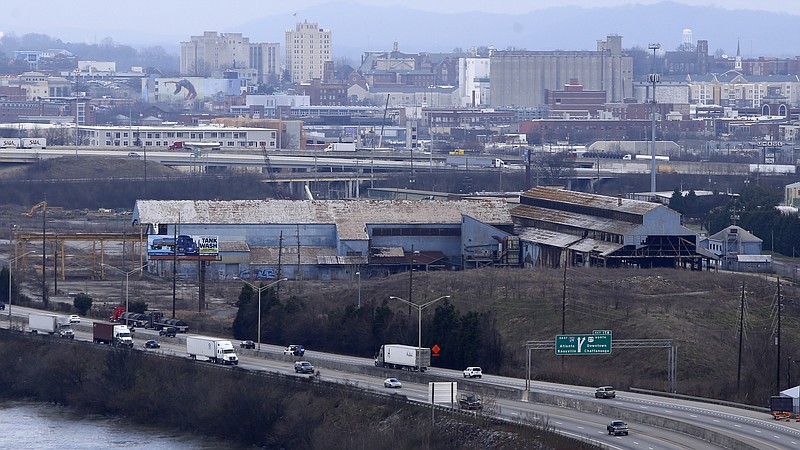An artist's rendering of a transformed South Broad Street area of Chattanooga looks almost too good to be true.
When lifelong or new Chattanooga residents glimpse the city to the right of the Tennessee River as they come in from the west on Interstate 24 or the shuttered manufacturing area between Broad Street and the river as they travel over the viaduct that crosses Chattanooga Creek, a total reclamation seems like a pipe dream.
Chattanooga Design Studio leaders, who have integrated the ideas suggested by 250 people at a series of public meetings last fall and created a 128-page report, swear it's not.
Indeed, anchored by a stadium that would be the new home of the Chattanooga Lookouts minor league baseball team, the area shown in the renderings sports tree-lined streets, a variety of mixed-use buildings, mixed housing, restaurants, shops, greenways and open spaces.
The timing and development of such a project seems ideally timed.
The Wheland Foundry and U.S. Pipe properties, which occupy the city's front door on I-24, have been idle for years and don't make the most ideal first impression. The 400-acre area's population has declined to 1,158 (in 2015), and the district has the lowest population density in or around the downtown area. With more people choosing to live closer to downtown, the core city is only a few minutes of a drive or bike ride from the South Broad area. And the no-longer-tepid economy makes it the consummate time to redevelop the area.
Meanwhile, improved access from I-24 to the South Broad area and the Southside will result from one of the projects funded in part by Tennessee Gov. Bill Haslam's fuel tax increase last year. The current loops and ramps system will be replaced, beginning in 2019, in part, by a new, one-way ramp and frontage road that will exit the interstate west of the I-24 and U.S. Highway 27 interchange by the Wheland site. The frontage road will be parallel to I-24 and will serve Broad Street, Williams Street and Market Street with signaled intersections.
While the study also recommends a new sports facility be built at the Howard School and an adjacent middle school be reopened where one closed in 2009, those ideas are not original to the planning process. In fact, the community has sought a new football/track stadium there for years. And, in Hamilton County Mayor Jim Coppinger's property tax proposal late last summer, just such a stadium was named as one of the priorities and already has a designer, Barge Design Solutions.
Chattanoogans eager for the redevelopment to take off would love to snap their fingers and have it done. It's not that easy, of course. It's just a plan right now, after all.
Officials of the Chattanooga Design Studio presented their study to the Chattanooga City Council on Tuesday, and the plan will be discussed on Monday from 5 to 6:30 p.m. in meeting room 1A at the Development Resource Center on Market Street. It will go before the Chattanooga-Hamilton County Regional Planning Agency in March and be presented again to the city council for approval in April.
As of yet, no plans for financing the stadium or other individual pieces of the revamped district have been announced. But the study suggested the city could establish a tax increment financing district, which would allow additional taxes generated by development in the area to be used to pay for public improvements such as sports facilities, parks, streets and walkways that would be necessary.
It would be a much more expansive version of what the city council approved on Tuesday for the extension of Dr. M.L. King Jr. Boulevard across Riverfront Parkway and down to the Blue Goose Trailhead of the Tennessee Riverwalk, just above the Tennessee River.
Helen Burns Sharp, the founder of Accountability for Taxpayers Money who has opposed the overuse of tax increment financing, said such a plan for the South Broad district would be more in line with what such financing was created to do but must be structured carefully.
"This will be a classic TIF district," she said, "in that it affects a blighted area and there is potential for significant job growth and gains to the city's tax base, and this is an area that may need some public funds as a catalyst to realize its potential for redevelopment."
But we guess the financing will be farther down the road than the design plans. For now, though, we can dream of a vibrant, active, walkable South Broad district and know that one day it could become a reality.
